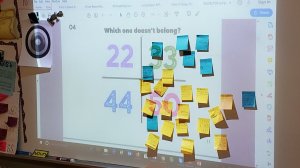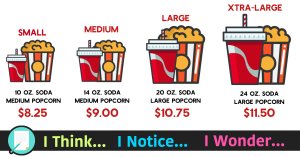2 Ways to Encourage Reflection on Math Concepts
Open-ended questions guide students to participate and to think mathematically, which cements their learning.
Your content has been saved!
Go to My Saved Content.For many students, math is a subject where every question has one (and only one) correct answer. If a student is asked, “What is two plus two?” the only acceptable response is “Four.”
What if students were also asked, “Why does two plus two equal four?” Reflection questions like this, which are purposely open-ended, do not have a single correct answer. Instead, these questions remove the fear of being wrong and encourage mathematical thinking, participation, and growth.
“Reflection questions are important for students and help move the focus from performance to learning,” says Stanford professor Jo Boaler, who believes that “assessment plays a key role in the messages given to students about their potential, and many classrooms need to realign their assessment approach in order to encourage growth instead of fixed mindsets among students.”
In addition to performance-focused questions and assessments (“What is the total sum of the interior angles of a triangle?”), you can ask open-ended reflection questions that encourage mathematical thinking and participation (“Why do you think the total sum of the interior angles of a triangle always equals 180 degrees?”). The second question shifts the focus from performance toward thinking, learning, and engaging with mathematics without the fear of being wrong.
How can you incorporate reflection questions into your math lessons? Try these two useful strategies.
Which One Doesn’t Belong?
If you grew up watching Sesame Street, you probably remember the “One of These Things Is Not Like the Others” segment, where viewers had to identify one object out of a set of four that did not belong. This simple activity helps children to identify similarities and differences, and this type of thinking can be extended to learning math.
Which One Doesn’t Belong? (WODB) math activities present students with four different visual graphics that are all similar and different from each other in some way. This four-quadrant activity is my go-to for getting whole-class participation, as each option can be argued as the correct answer.

Observe the photo above of a WODB activity showing the numbers 22, 33, 44, and 50, and identify which choice does not belong and explain why. Since the graphics are purposely ambiguous and have overlapping similarities and differences, there is no single correct answer. One student might conclude that 50 doesn’t belong because it is the only number not divisible by 11. Another student may also believe that 50 doesn’t belong but for a different reason, namely that it is the only number with two different digits. A third student might conclude that 33 doesn’t belong because it is the only odd number. With this one graphic, you can easily spark a deep mathematical discussion where all students are eager to participate and share their thinking without any fear of being wrong.
WODB activities can be used for any math topic and can include images, numbers, charts, and graphs. They can also be used as formative assessments where students write their responses on sticky notes and stick them on the graphic that is projected at the front of the classroom.
Think-Notice-Wonder
Writing about math helps students organize their thoughts, use important vocabulary terms, and express their ideas in depth—which leads to deeper understanding.
Think-Notice-Wonder (TNW) activities are open-ended writing prompts where students are required to complete I think…, I notice…, I wonder…, based on a given graphic related to a math topic.

For example, students observe the soda and popcorn price graphic above and are prompted: What do you think? What do you notice? What do you wonder?
Encourage your students to think deeply for a minute or two before putting their thoughts into writing. They can share their ideas about the relationship between the price of a bag of popcorn and a soda based on size. They can verbalize how they perceive the proportional relationship to behave, wonder about which option provides the most value, and question how the prices were determined in the first place.
Since TNW writing activities are open-ended and do not have a correct answer, they encourage full group participation. Teachers often have students share their responses in a math journal notebook, but you can also use this free TNW student response template.
If you are looking for free images and graphics to use as TNW writing prompts, here are a few helpful resources:
- Find math-related graphics and images using Google Image Search and display them at the front of your classroom.
- Access and share teacher-created TNW activities on Twitter by searching the math education hashtags, including #ITeachMath, #MTBoS, and #NoticeWonder.
- Free stock photo websites such as Unsplash have an excellent collection of photos that relate to math topics, including estimation, three-dimensional figures, and mathematical patterns in nature.
When you add more reflection questions into your math lessons, students will have more opportunities to participate and engage in mathematical thinking without fear, which leads to a most-desired outcome—accessibility and growth.
